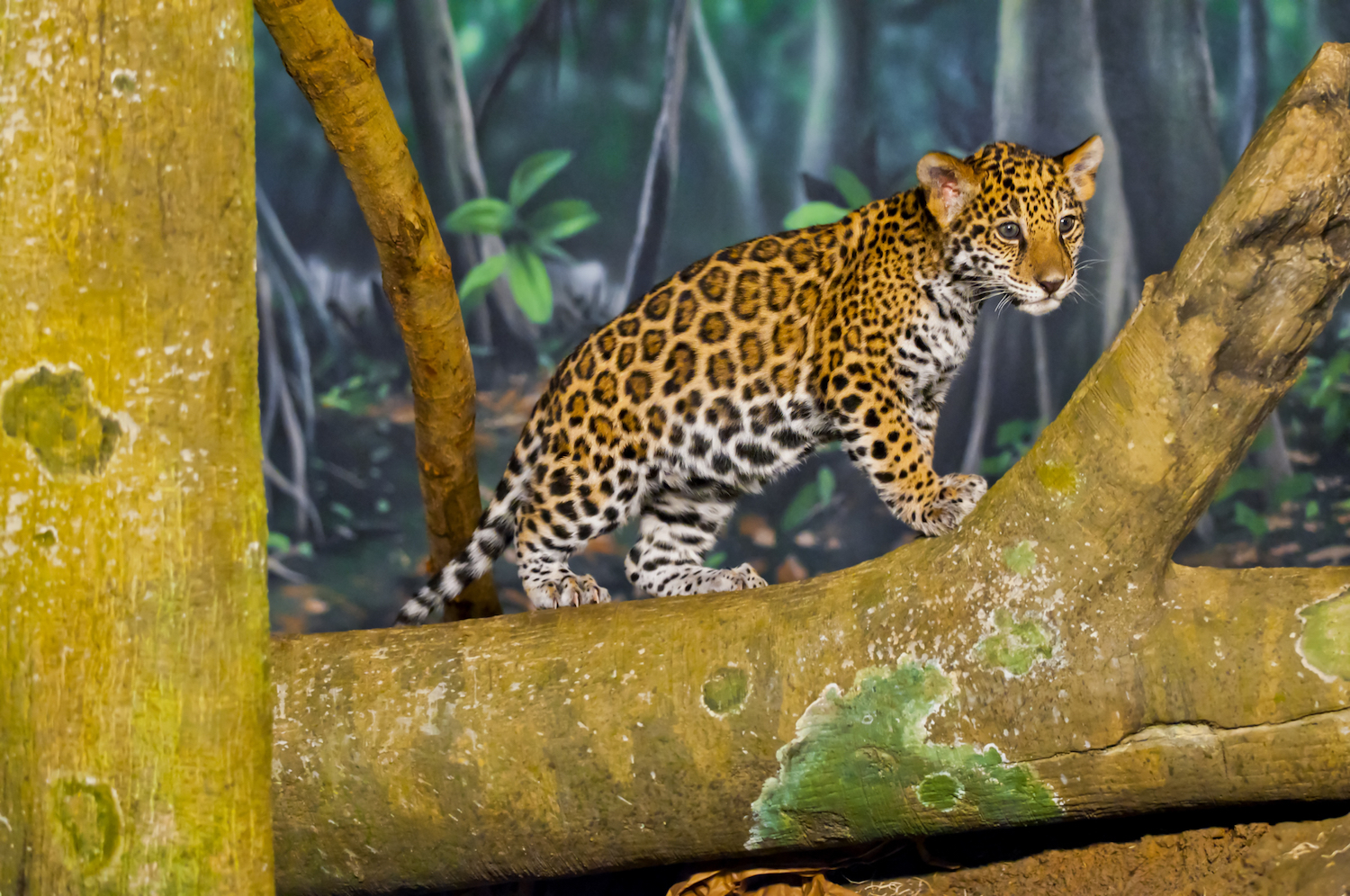Jaguar Mom Eats Dead Cub, and Zoo Caretakers Can't Explain Why

A newborn jaguar cub lived a mere two days before it died and — to the horror of its caretakers at Associação Mata Ciliar in Brazil — its mother gobbled it up.
Why would a mother eat her cub? It's hard to say, because there's still much to learn about how jaguars act not just in the wild but also in captivity, said Howard Quigley, Jaguar Program executive director and conservation science executive director for Panthera, a global wild-cat conservation organization, who was not involved in the cub's case.
"I've been studying jaguars for 25 years in the wild, and we still don't know a lot of things," Quigley told Live Science. "We still don't really follow jaguars into their dens. We don't know if [mothers eating their own cubs] happens in the wild." [In Photos: A Jaguar Takes Down a Caiman in Brazil]
Despite its gruesome end, the cub's birth is still cause for celebration. It's the first jaguar cub ever born via artificial insemination, according to a news statement released by the Cincinnati Zoo & Botanical Garden, whose scientists took part in the endeavor. The cub's mother, a wild-born jaguar (Panthera onca) named Bianca, was one of five jaguars that was artificially inseminated in November 2018.
Zoo staff used a remote video to monitor the first-time mother and cub after the youngster was born on Feb. 16. At first, Bianca "showed excellent maternal care and nursing" and her cub appeared vigorous, the zoo said.
But then, the cub died. It's not clear whether Bianca killed it or if the cub died from other causes. Either way, Bianca wasted no time, immediately devouring her offspring.
If the cub died from other causes, it's likely that Bianca saw its body as food, which could explain why she ate it, Quigley said.
Get the world’s most fascinating discoveries delivered straight to your inbox.
"It's repugnant to us, but it's not unusual for a predator to see that body as potential food," he said.
It's not uncommon for other big cats to kill cubs, though usually not their own. African lions (Panthera leo) are likely the best-known animals to practice infanticide. When new males take over a pride's leadership, they often kill the unrelated offspring, which then prompts the females to go into estrus and mate with the newcomers.
Infanticide has also been documented in cougars (Puma concolor), lynx (Lynx) and ocelot (Leopardus pardalis), according to a 2017 study published in the journal Acta Ethologica. Sometimes, if a cub dies from other causes, the parent will chow down. In one case, a 3-month-old mountain lion was traveling with its mother and two other siblings, Quigley said. The cub died of the plague, and when researchers went to collect its body (the cub had been wearing a radio collar, so researchers knew where to find it), they saw that the mom and siblings were eating the body.
For these wild animals, "it's seen not as the emotional bond you'd have with a child, but more of the biological need of food," Quigley said.
So, what about jaguars? There are a few documented cases of infanticide and even cases of adults eating cubs, although not their own. For instance, researchers found the remains of a jaguar cub in the stomach contents of a hunted adult male jaguar in Venezuela, according to the 2017 study. In another instance, a father jaguar killed its two male cubs in Brazil, paternity testing after the death confirmed.
However, there are no known cases of a mother killing and eating her own cub, Quigley said. There is a lot of individual variation among big cats, though, with some being better at caring for young than others, he said.
"There's a certain learning that takes place in any animal, in any mom, to try to be a good mom," Quigley said. "So, as a first-time mom, who knows what happened?"
- Big Cats: Photos Reveal Elusive Jaguars
- Cat Album: The Life of a Cheetah | Wild Cat Photos
- In Photos: The Wild Cats of Kruger National Park
Originally published on Live Science.

Laura is the managing editor at Live Science. She also runs the archaeology section and the Life's Little Mysteries series. Her work has appeared in The New York Times, Scholastic, Popular Science and Spectrum, a site on autism research. She has won multiple awards from the Society of Professional Journalists and the Washington Newspaper Publishers Association for her reporting at a weekly newspaper near Seattle. Laura holds a bachelor's degree in English literature and psychology from Washington University in St. Louis and a master's degree in science writing from NYU.


